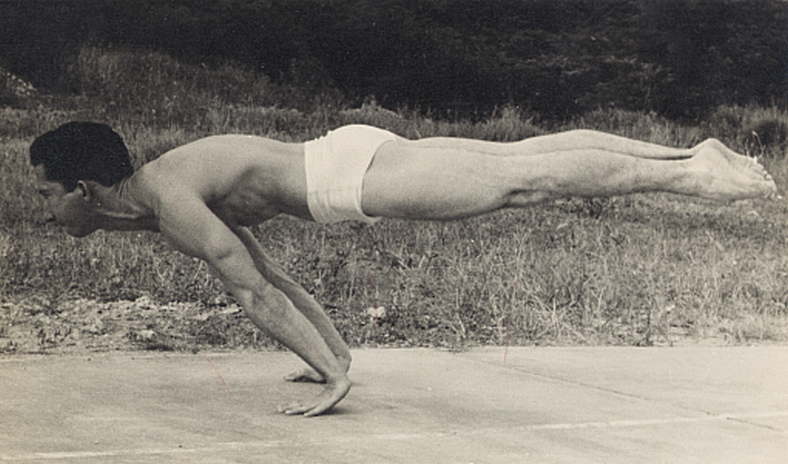The gymnastic handstand or straight handstand is a more difficult move then the natural or curved handstand. For that reason I believe a beginner should work on the curved handstand first and once they become proficient at that then they can move onto the straight handstand.
Working on the straight handstand will take a good bit of dedication as you must learn to maintain a straight body while upside-down, something that certainly doesn’t come natural. As with any move its best to learn it in the easiest possible way first. For that reason we go to the wall.
When working on the gymnastic handstand it is better to face the wall with your body rather then have your back to it. This makes it easier to get into the straight body position. You can cartwheel into position or walk your feet up the wall.
Once you are in the handstand get your hands as close to the wall as possible. Stick your head through your arms. This alone will help your back to stop curving. While keeping the arms locked push through with your chest to open up the shoulders. If this is difficult you may need to work on shoulder flexibility.
Another key part is the lower body. You want to maintain what is known in gymnastics as a hollow body position. That is you tuck your pelvis in. Think as if you were trying to reach your tail bone to your navel and shorten that distance. You may need to practice this position while not in a handstand if it is unfamiliar to you.
Once you have a good position hold for time against the wall. Work up to 2 minutes for multiple sets. If you can do this you have good endurance not just to hold the handstand but to keep your position while you do it. At that point the gymnastic handstand should feel natural to you.
The next step is to transition to freestanding. Instead of just kicking up out in the open start in the straight handstand against the wall and come off a little bit to find your balance. But that will have to be an article for another time…
Good Luck and Good Hand Balancing,
Logan Christopher






